Saturday mornings in Gainesville weren’t meant to be spent locked in a one-sided wrestling match with a lawnmower, but somehow, there you are—with sweat dripping into your eyes before 9 a.m. You’d rather be on the patio, coffee in hand, taking in a lush and effortlessly beautiful landscape. Instead, you’ve lost another weekend to edging, raking, and watering a yard that still doesn’t measure up.z
Watching your water bill soar while your landscape still looks mediocre compared to your neighbor’s picture-perfect yard down the street can be aggravating. Luckily, Florida-friendly landscaping is the solution, using a carefully planned approach that turns your yard into one that practically maintains itself. With the right plants, layout, and techniques, your yard can become striking and simple to manage. It’s an especially good fit if you’ve reached a stage where kneeling, hauling, and weekend yard marathons aren’t as doable as they once were, and relaxing in a beautiful, low-effort space sounds a whole lot better. Here are five strategies to help you turn your Gainesville yard from a maintenance headache into a space that practically handles itself.
Tip 1: Choose the Right Plant for the Right Place
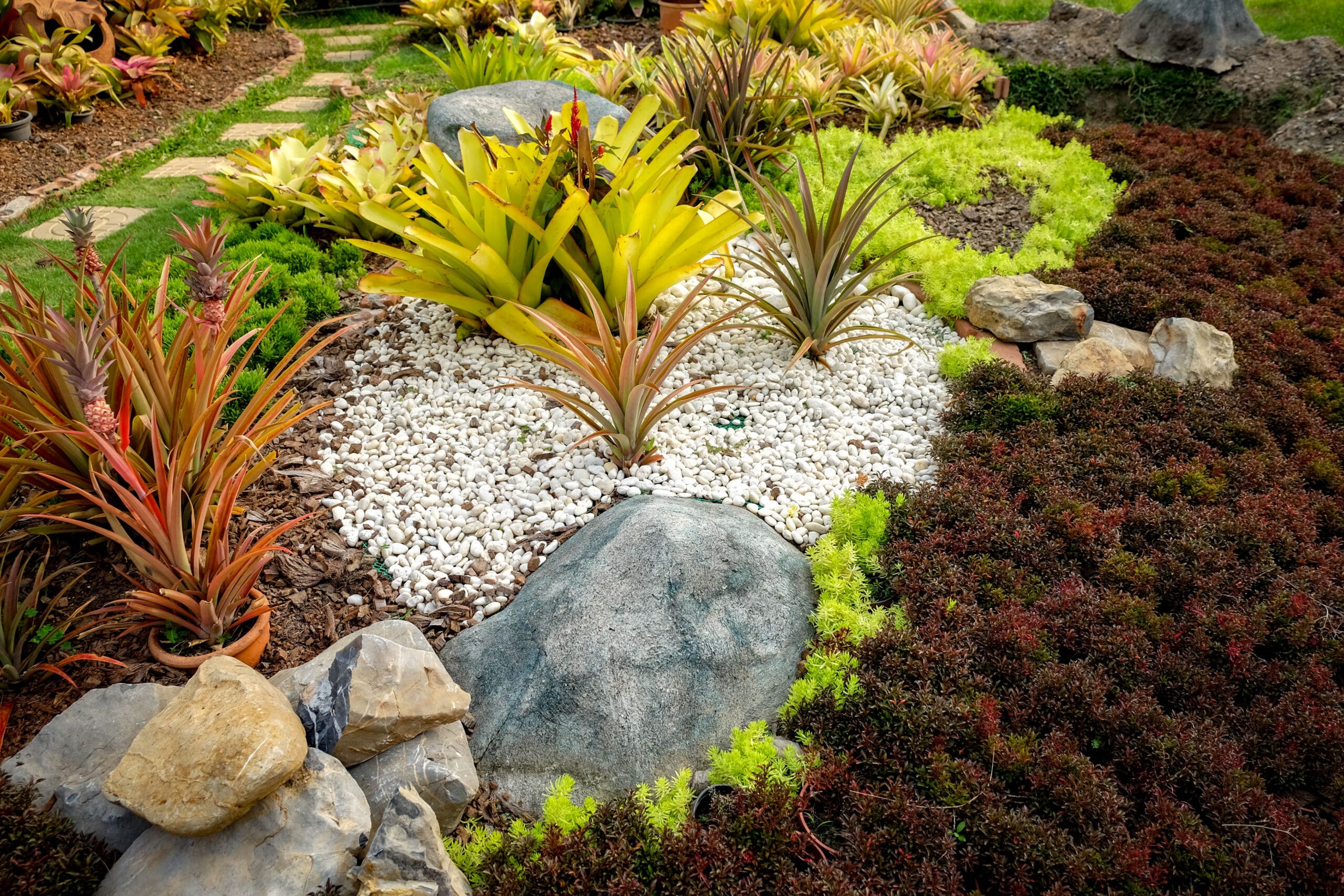
Getting plant placement right from the start saves you years of maintenance headaches. Gainesville’s unique growing conditions create distinct microclimates across your property, meaning what thrives in your sunny front yard might struggle in the shaded area behind your house. Informed placement means matching each plant to its ideal growing conditions rather than forcing a species to adapt in an unsuitable location.
Work With Your Soil and Drainage
Your sandy soil drains fast after thunderstorms but holds water in low spots, creating different growing zones on the same property. Place plants that love moisture where water naturally collects, and put drought-tolerant varieties on slopes where water runs off quickly. This way, you work with what nature already provides instead of constantly having to adjust your irrigation.
Select Low-Maintenance Native Shrubs
Firebush makes an excellent choice for sunny spots where you want structure and seasonal interest. This Florida native produces orange-red flowers that hummingbirds love, plus berries that feed songbirds through fall and winter. Unlike exotic shrubs that need constant pruning and pest control, firebush keeps its shape naturally and handles both dry spells and flooding.
Plant three firebushes about six feet apart in a triangle pattern. They’ll fill in beautifully within two growing seasons and create an impressive focal point that requires almost no care.
Replace Problem Lawn Areas With Groundcovers
Beach sunflower works wonders in spots where grass struggles. It spreads naturally to form golden carpets that bloom spring through fall with no mowing, feeding, or pest control needed. Plant specimens three feet apart in problem areas, and they’ll fill in completely within one growing season while attracting beneficial insects that help control garden pests.
Tip 2: Reduce Lawn Areas With Easy Alternatives
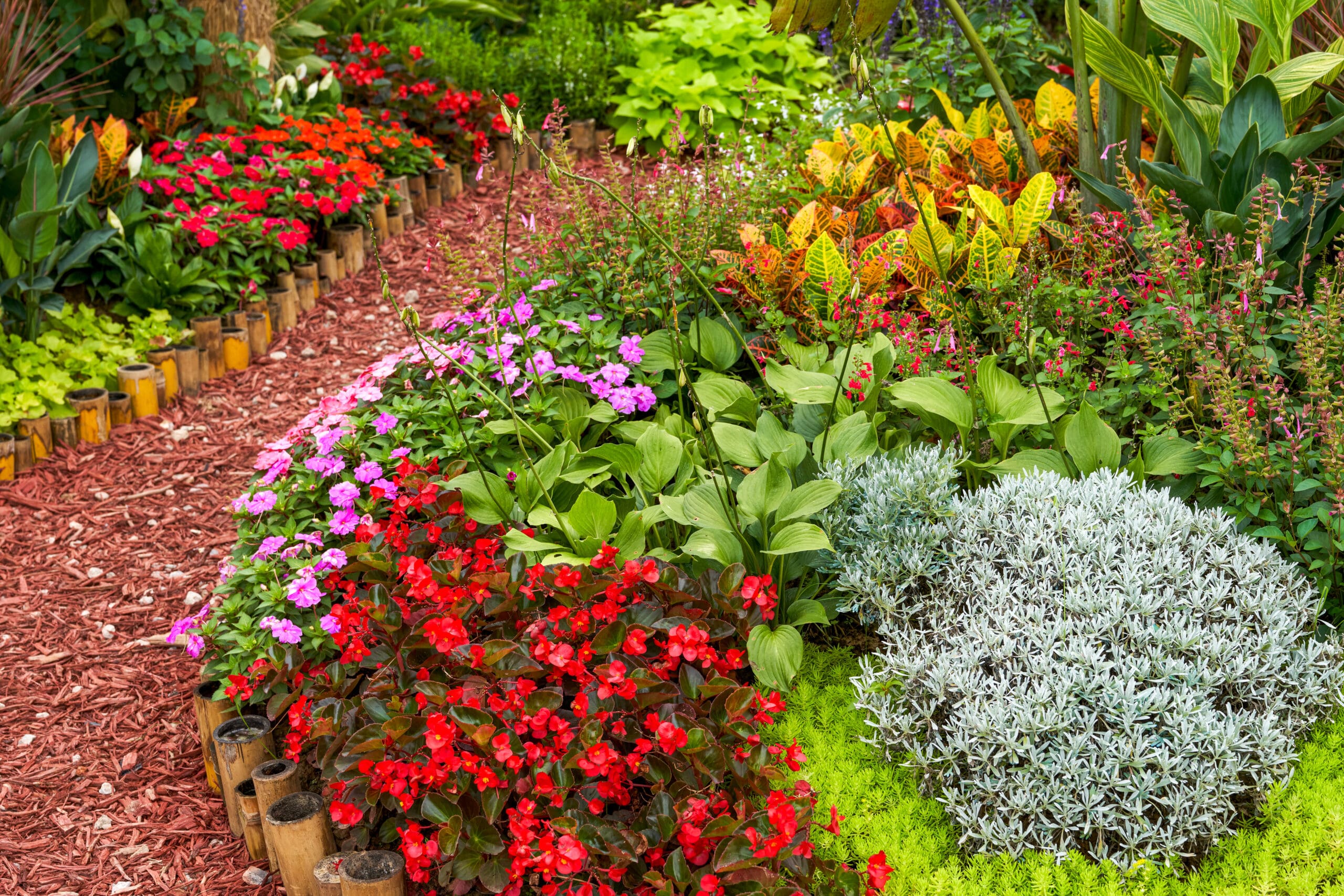
Traditional grass takes more time and resources than any other part of your landscape. It needs weekly mowing during Gainesville’s long growing season, plus regular feeding, watering, and pest management all year. Reducing lawn areas through thoughtful design creates opportunities for easier care while making your yard more interesting.
Create Flowing Planting Beds
Design curved bed lines that follow your property’s natural shape, avoiding narrow grass strips and tight corners that make mowing difficult. Make beds at least eight feet deep for shrub plantings so plants have room to grow without crowding each other and needing frequent pruning.
Add Functional Pathways
Use materials like flagstone, brick, or gravel to create pathways that connect different areas of your yard. A main pathway with branches leading to seating areas or garden features makes maintenance easier while giving you practical access through garden spaces.
Use Mulch for Weed Control
Apply organic mulch in all planting beds to suppress weeds and create clean, finished edges that define your garden areas clearly. Rock mulches work particularly well in areas where you want permanent coverage that never needs replacement, especially around drought-tolerant plantings. Keep any mulch material slightly away from plant stems to prevent moisture-related disease issues.
Tip 3: Choose Native and Low-Water Plants for Easy Care
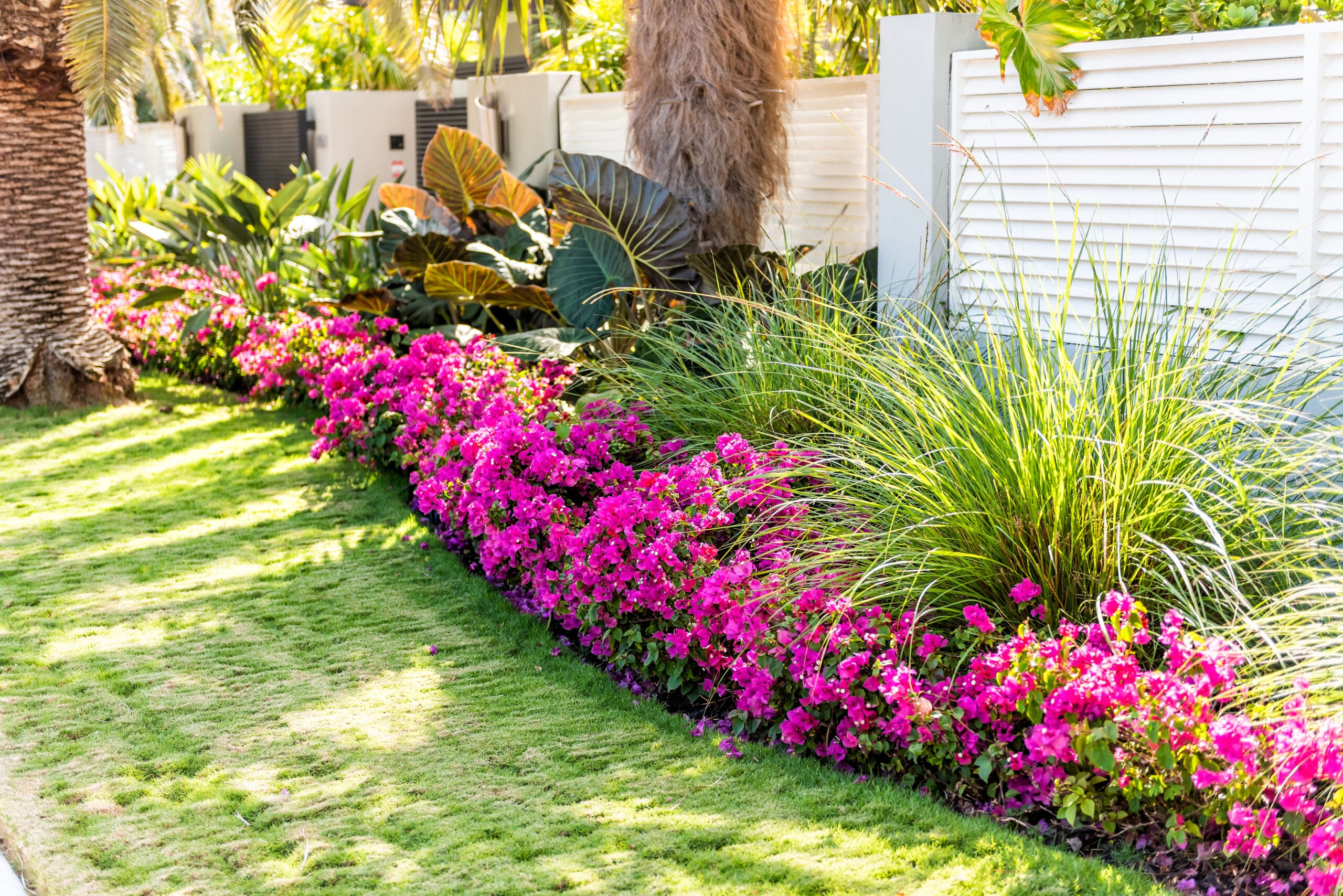
Florida’s native plants adapted to our climate over thousands of years, developing natural resistance to local pests, diseases, and weather that challenge exotic species. Understanding which natives thrive in different situations helps you create beautiful displays with minimal ongoing effort while supporting local ecosystems. These plants typically have fewer pest and disease issues, which means significantly less effort maintaining your landscape.
Go With Proven Native Performers
Coontie ranks as one of Florida’s most versatile and maintenance-free plants. This ancient plant provides evergreen structure in both sun and shade while needing almost no care once established. Its feathery fronds stay attractive year-round without pruning, plus it produces interesting cone structures that support specialized butterflies.
Use coontie as accent plants near entryways or mass them under existing trees where other shrubs struggle. Their controlled growth means they won’t outgrow their space or need frequent trimming.
Add Seasonal Drama With Ornamental Grasses
Muhly grass creates spectacular fall displays when its pink plumes emerge in October, giving months of beauty that only needs annual cutting back in late February. This clumping grass forms attractive mounds that work as single specimens or massed for dramatic color sweeps. Unlike spreading grasses that need constant edge control, muhly stays put while handling both drought and flooding.
Plant seven to nine specimens in natural groupings for the best visual impact during peak display season.
Include Reliable Screening Plants
Ligustrum varieties provide dependable evergreen screening that maintains dense growth with minimal pruning and no supplemental watering after establishment. These adaptable shrubs handle varying light conditions and soil types while providing consistent privacy and structure that anchors your landscape design through all seasons.
Add Water-Storing Succulents for Ultimate Low Maintenance
Beyond the typical desk-decoration succulents, outdoor varieties like prickly pear cactus and native agave store water in their tissues and thrive during dry spells without any supplemental irrigation. These plants provide striking focal points while demonstrating water-wise gardening practices.
Many Florida-tolerant succulents, including aloe and sedum varieties, offer both beauty and practical benefits like aloe for its healing properties and sedum for attracting butterflies while withstanding drought, heat, and even freezes. For more detailed information on varieties like Kalanchoe with their long bloom periods in vibrant colors, or Aeonium’s glossy rosette shapes that look almost too perfect to be real, head over to Best Succulent Plants for Florida Weather. These hardy plants essentially take care of themselves once established, requiring minimal intervention throughout their long lifespans.
Tip 4: Install Efficient Irrigation and Mulching
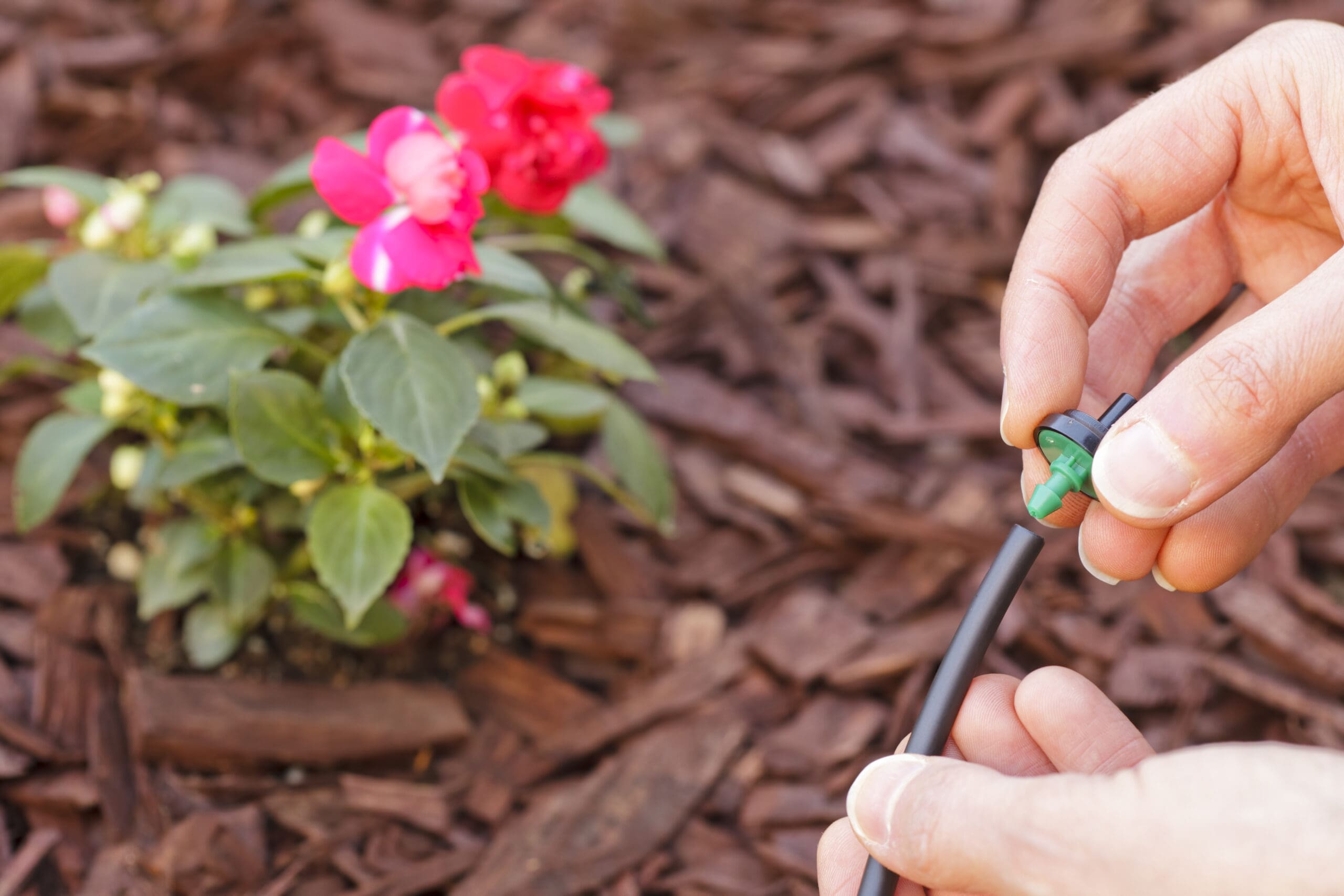
Good water management reduces both maintenance time and water bills while keeping plants healthy during Gainesville’s changing weather. Installing efficient drip irrigation and applying thick mulching helps retain moisture while being both cost-saving and eco-friendly.
Choose Drip Irrigation for Efficiency
Drip systems deliver water straight to plant roots with minimal waste, typically reducing water consumption by 40-60 percent compared to traditional sprinklers. These quiet systems can be automated with controllers that adjust watering based on weather conditions.
Follow Local Watering Guidelines
Gainesville’s watering restrictions limit when you can irrigate, making efficient system design important for keeping your landscape healthy while following local rules. Design zones based on what plants actually need, grouping drought-tolerant species separately from moisture-loving plants.
Maximize Mulching Benefits
Layer organic materials like pine bark, pine straw, and shredded hardwood three to four inches thick around trees, shrubs, and perennials. Proper mulching reduces watering frequency by 30-40 percent while moderating soil temperatures during hot and cold extremes, creating ideal growing conditions year-round.
Tip 5: Follow a Simple Seasonal Schedule
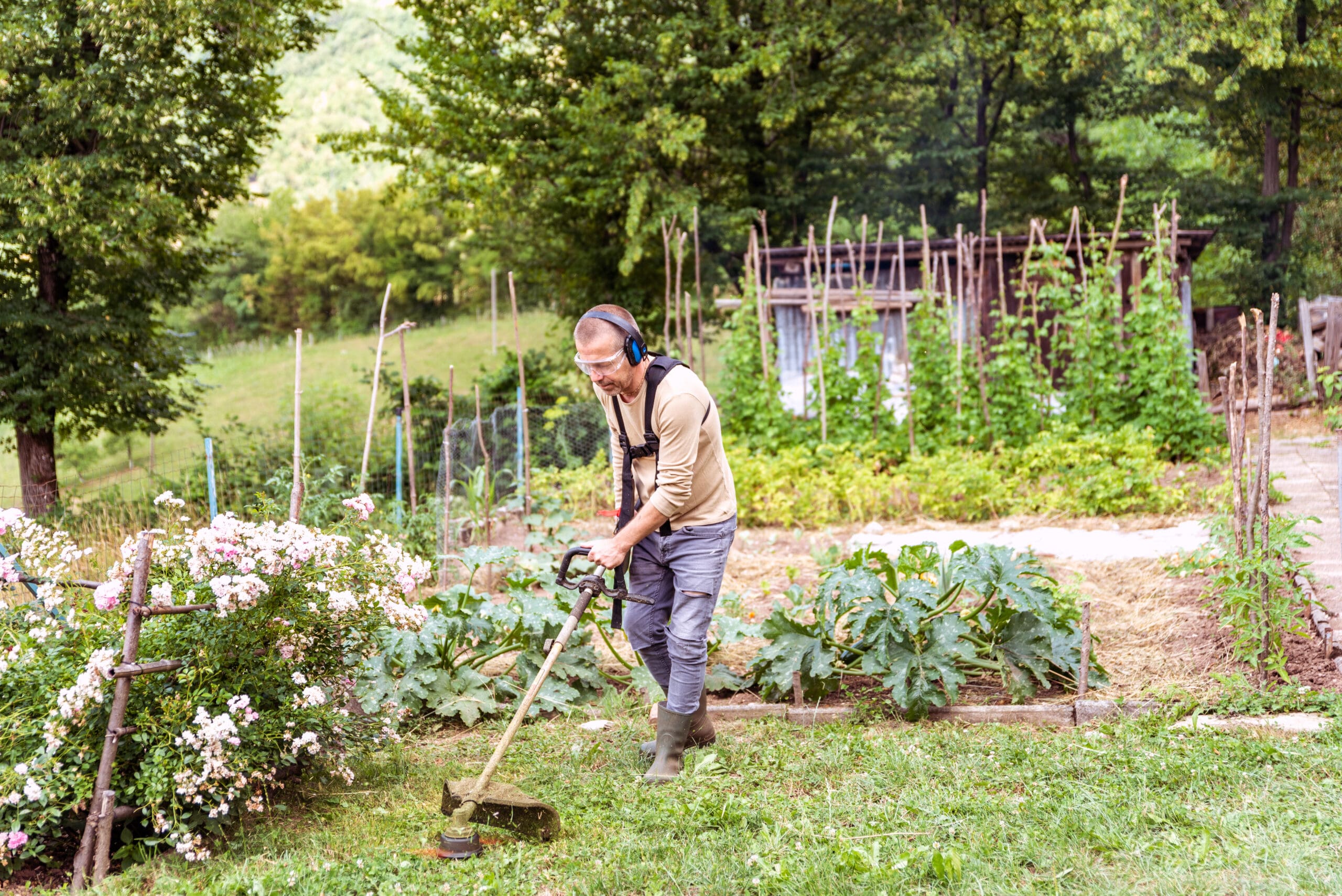
Organizing landscape care around natural seasons makes maintenance more effective while keeping your Florida-friendly garden healthy with minimal time investment. Good timing prevents small problems from becoming expensive repairs.
Winter: Focus on Structure and Planning
Winter is perfect for pruning when plants are dormant and problems are easy to see without leaves blocking your view. Remove dead, damaged, or crossing branches during January and February when cuts heal fast and disease risk stays low. This is also the ideal time to assess your landscape’s overall health and plan improvements for the coming year.
Update any mulch areas that look thin or weathered, ensuring consistent coverage that will support plant health through the active growing season ahead.
Spring: Light Feeding and Fresh Starts
Spring activities focus on light feeding with slow-release organic products that provide nutrients gradually through the growing season without pushing excessive growth that needs frequent pruning. Apply compost or aged manure around established plants in March to support healthy development while improving soil naturally.
Early spring also works well for dividing overgrown perennials, moving plants that have outgrown their spots, and installing new additions that will develop strong roots before summer stress hits.
Summer: Minimal Intervention
Summer maintenance stays remarkably light in well-designed gardens throughout Gainesville, focusing mainly on checking irrigation performance and pulling occasional weeds that pop up despite mulching. When you’ve planned your Gainesville low-maintenance landscaping properly, established native plants typically need no extra care during this period beyond regular watering schedules, letting you enjoy your landscape instead of constantly working on it.
Remove spent flowers from blooming perennials to extend their display and prevent unwanted spreading that can create maintenance problems later.
Fall: System Checks and New Plantings
Fall preparation includes checking irrigation systems for winter efficiency and making needed adjustments for changing plant water needs as growth slows and rainfall patterns shift. This season also provides the perfect opportunity to evaluate your landscape’s performance over the past year and identify areas for improvement.
Consider consulting with landscape professionals for complex projects or if you notice plant health issues that require expert diagnosis and treatment beyond basic homeowner skills.
Create Your Dream Low-Maintenance Landscape
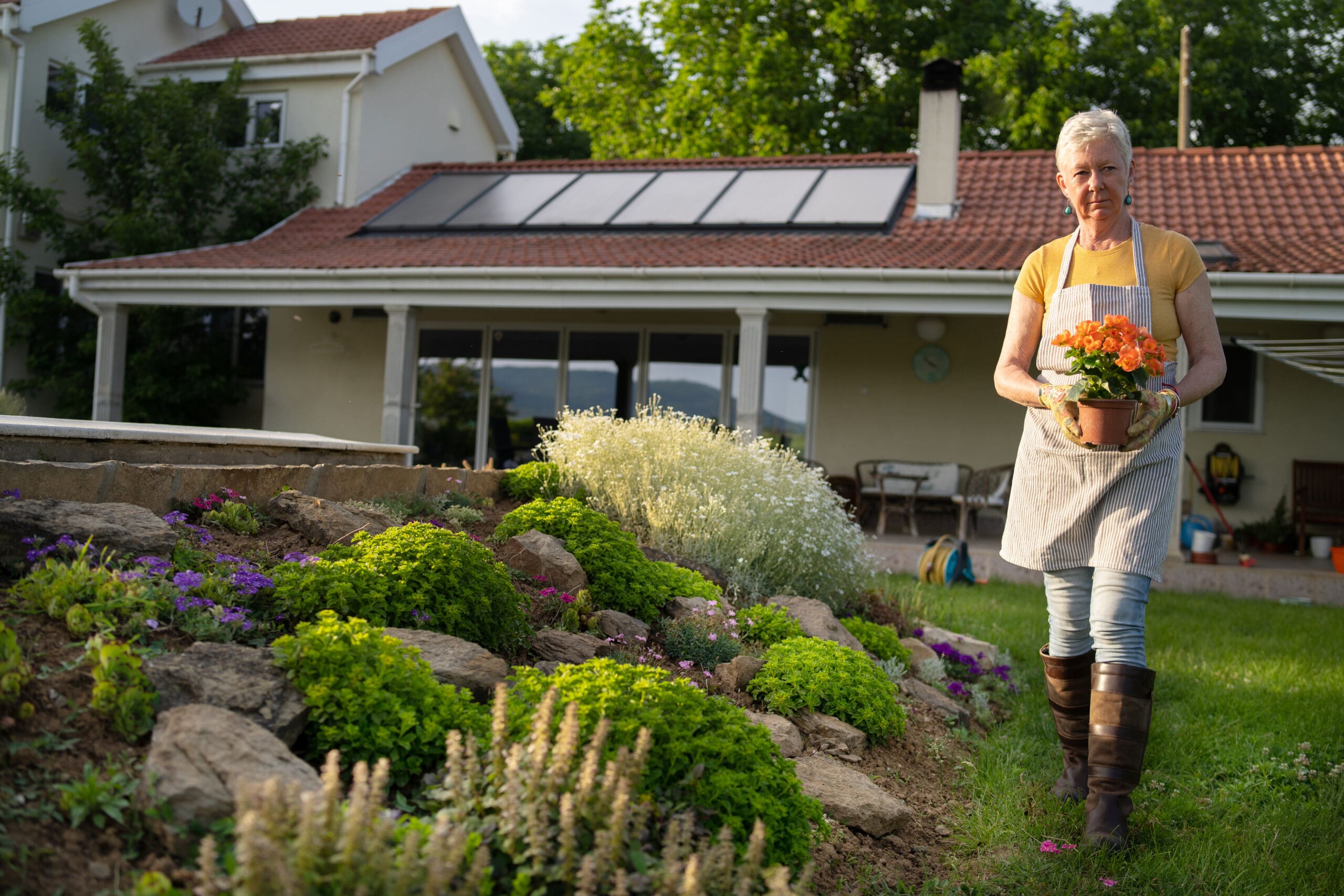
Florida-friendly landscaping proves that stunning low-maintenance yards can still be gorgeous throughout the year. These easy landscaping ideas work together to create sustainable gardens that support local wildlife while giving busy families and older homeowners the effortless beauty they want. By choosing the right plants, using efficient water management, and following simple seasonal routines, you can get the landscape you’ve always wanted without giving up weekends or stretching your budget.
Your Gainesville yard can become a source of pride and relaxation instead of stress and endless weekend chores. The minimalist landscaping principles above create lasting value that gets better over time as plants mature and settle into their natural growth patterns. These proven strategies deliver consistent results while reducing your environmental impact through water conservation and native plant support for local wildlife.
If you’re still searching for more innovative approaches to sustainable outdoor living? Explore our guide on 10 Creative Gainesville Landscaping Ideas for a Sustainable Florida Yard for additional inspiration that combines beauty with environmental responsibility.
And when you’re ready to trade your weekend yard work for weekend relaxation, Skyfrog Landscape is here to help. We’ve transformed properties all over Gainesville into stunning, self-sustaining landscapes using proven Florida-friendly principles that actually work in our unique climate. Stop wasting your Saturdays on lawn maintenance and start enjoying the beautiful outdoor space you’ve always wanted. Get started with your free consultation today and discover how we turn high-maintenance headaches into low-care landscapes that will make your neighbors jealous.